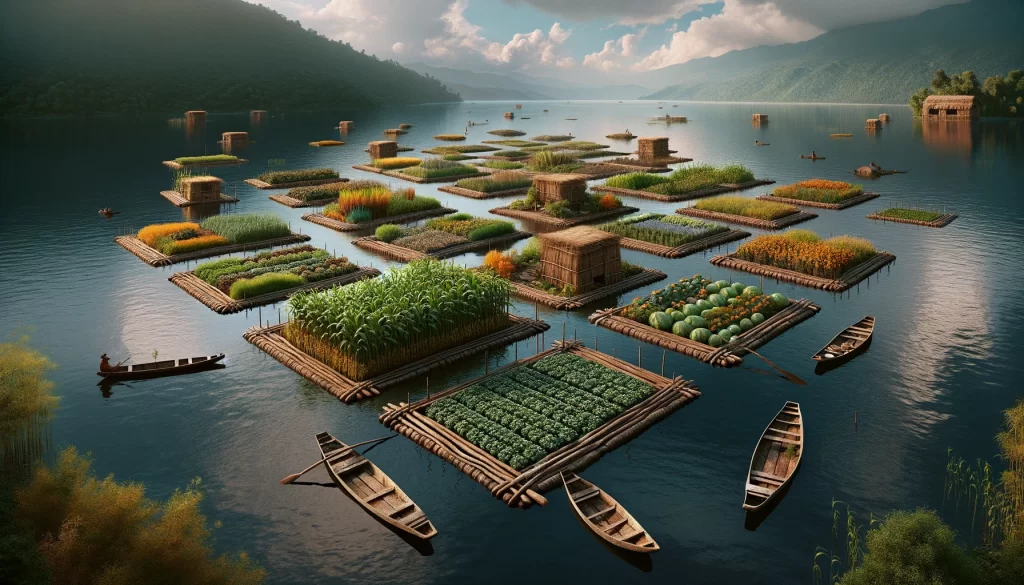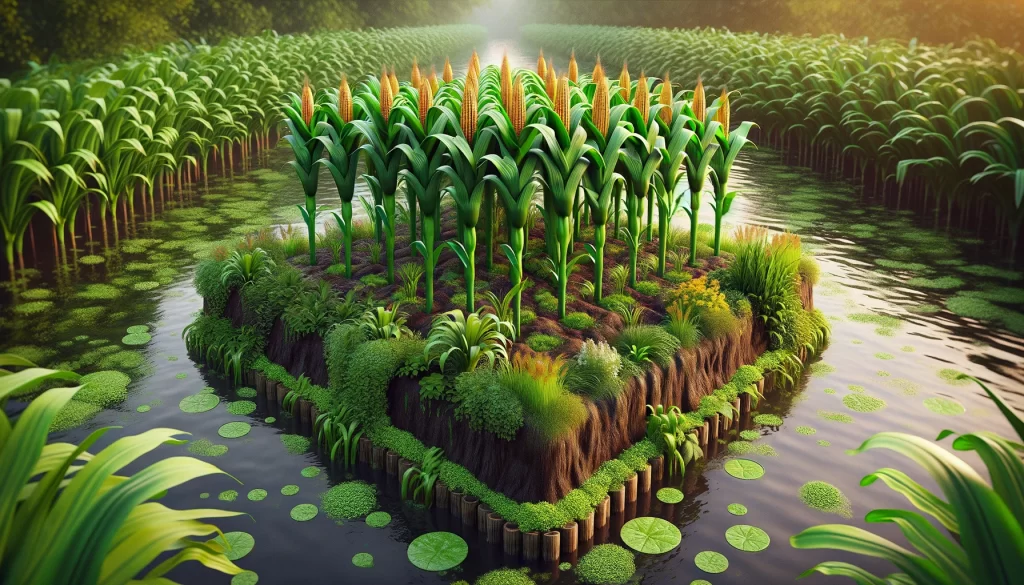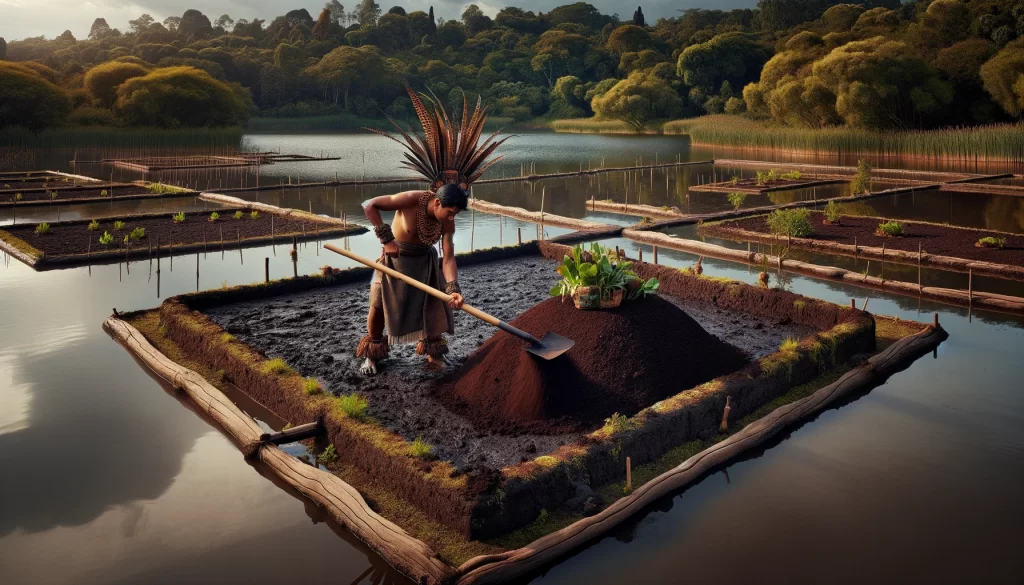Chinampas are a traditional agricultural system used by Mesoamerican cultures, especially by the Aztecs in the Valley of Mexico. These are artificial islands built on lakes or shallow swamps, where a variety of crops such as maize, beans, squash, and ornamental flowers were cultivated.

The construction process of chinampas was quite ingenious and required specialized labor and knowledge. It involved interweaving reeds, rushes, and branches to form a kind of floating bed over the water. This structure was reinforced with mud and soil, creating an elevated and fertile platform above the lake’s surface.
Chinampas had several significant advantages as an agricultural system:
- Increased productivity: By raising the ground level, chinampas provided a fertile and well-drained growing environment that favored crop growth and allowed for more abundant harvests.
- Efficient use of space: By building chinampas in water, available space was effectively utilized in areas where firm land was limited. This allowed densely populated agricultural communities in the Valley of Mexico to produce enough food to sustain themselves.
- Natural irrigation system: The water from the surrounding lake provided a constant supply of moisture to the chinampas, eliminating the need for additional irrigation systems and allowing crops to thrive under optimal conditions.
- Diverse ecosystem: Chinampas were not only used for agriculture but also served as habitat for a variety of fauna and flora, contributing to biodiversity and ecological balance in the region.

Today, although many of the original chinampas have been replaced by urban development in the Valley of Mexico, some are still preserved as a testament to the region’s rich agricultural history. Additionally, the concept of chinampas has inspired modern initiatives for sustainable agriculture and urban farming worldwide.
Functioning of Chinampas
- Construction of chinampas: Chinampas are built in shallow water areas such as lakes, lagoons, or swamps. The construction process involves weaving reeds, rushes, and branches to form a kind of floating bed over the water. This structure is reinforced with mud and soil, creating an elevated and fertile platform above the water surface.
- Water channeling: Chinampas are designed with channels between them to allow controlled water flow. These channels can be connected to natural water sources such as rivers or springs, or they can be fed with water pumped from the surrounding lake or lagoon.
- Flood irrigation system: Irrigation in chinampas is mainly done through the method of controlled flooding. Farmers open gates in the channels surrounding the chinampas to allow water to flow and cover the surface of the crop plots. Water is evenly distributed over the soil, providing moisture to the crop roots.
- Water absorption: The loose and fertile soil of chinampas easily absorbs water , allowing it to penetrate the soil and reach the crop roots. This flooding irrigation process provides a constant source of moisture to the crops, promoting healthy growth and good production.
- Natural drainage: Due to their elevated construction and channel design, chinampas have a natural drainage system that prevents water stagnation. Excess water drains easily through the channels, helping to prevent soil saturation and plant drowning.
- Crop rotation: Farmers often practice crop rotation in chinampas to maintain soil fertility and prevent pest and disease buildup. This diversified cropping system contributes to the long-term sustainability of chinampas.

Chinampas ingeniously harness available aquatic resources to create a productive and sustainable cultivation environment. The controlled flooding irrigation system ensures a constant water supply to crops, while the natural drainage design prevents waterlogging issues and ensures optimal growth conditions.
Chinampas and Milpas, Sustainable Systems
- Crop diversity: Both in chinampas and milpas, diversified agriculture was practiced, with a variety of crops intercropped. In chinampas, vegetables such as maize, beans, squash, and chilies were mainly cultivated, while in milpas crops like maize, beans, squash, chilies, tomatoes, and herbs were grown. This crop diversity not only provided a balanced diet but also contributed to soil fertility through crop rotation.

- Efficient use of space: Both chinampas and milpas were intensive agricultural systems that effectively utilized available space. While chinampas were built in shallow water areas, milpas were established on highlands or hill slopes. This combination of systems allowed Mesoamerican communities to maximize food production in a diverse and often challenging geographical environment.
- Agricultural sustainability: Both chinampas and milpas were sustainable agricultural systems that adapted to local conditions and efficiently utilized available natural resources. Both systems were based on traditional agricultural practices, such as controlled flooding irrigation in the case of chinampas and milpa cultivation with slash-and-burn techniques in the case of milpas.
 AgronoBlog – Agriculture Blog
AgronoBlog – Agriculture Blog 
